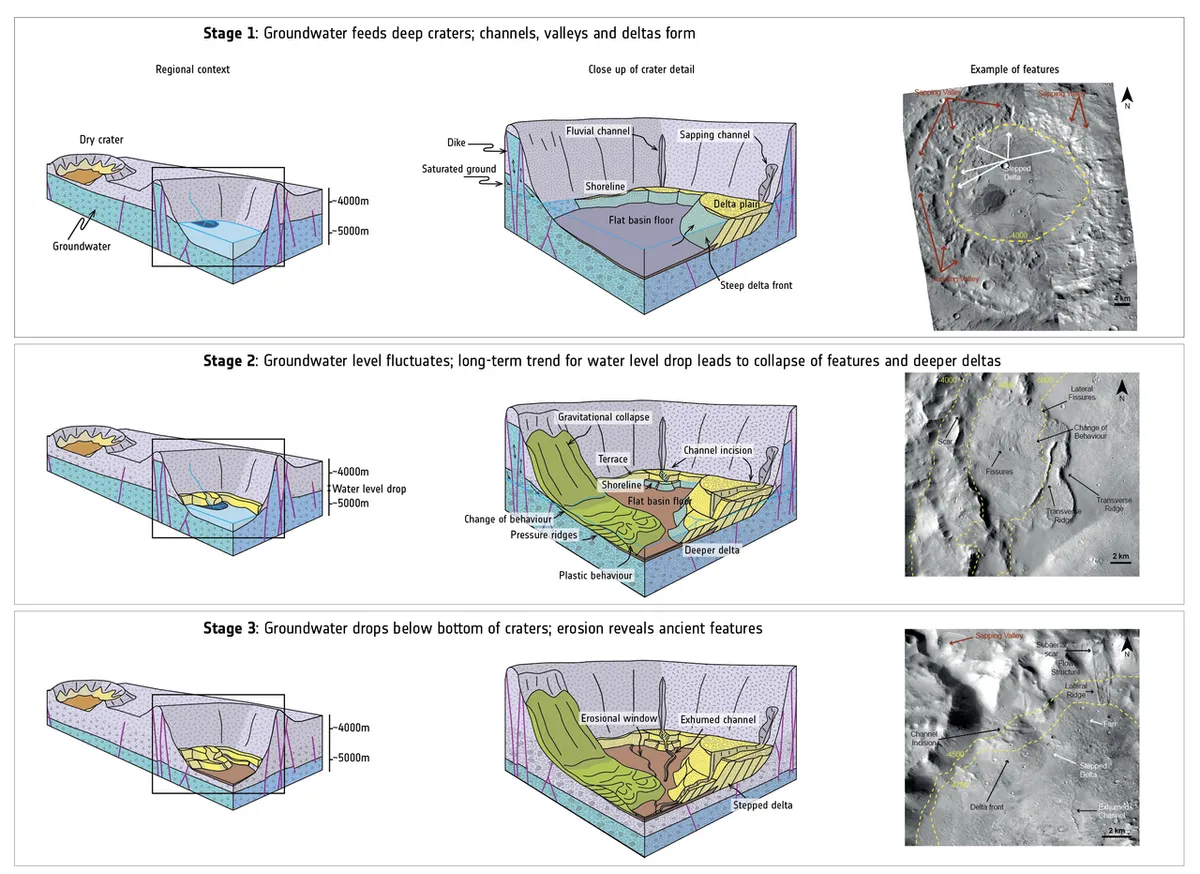New images sent back by ESA’s Mars Express satellite appear to show a system of interlinking trenches and valleys, which were most likely formed by water erosion. This adds further weight to the theory that, while Mars today is a barren, inhospitable place, it was once far less desolate. Scientists believe the Red Planet once had a denser atmosphere, which enabled it to maintain higher temperatures, and that its surface would therefore once have flowed with liquid water.
The images depict a region in Mars’s southern highlands, lying to the east of the Huygens impact crater and to the north of the largest crater on the planet, Hellas. At 3.5 billion-4 billion years old, the southern highlands are one of the oldest and most heavily cratered regions on the Martian surface.

The images appear to suggest that liquid water once flowed freely across this area, running downhill from north to south and carving out valleys up to 200km across and 200m deep. These valleys can still be seen today, although after four billion years of erosion and meteor impacts they’re a little less defined than they would once have been. What’s more, the system of interconnecting valleys and trenches appear to follow the same kind of dendritic (branch-like) pattern seen in river deltas right here on Earth.
But while the evidence that Mars’s surface once held running water seems to be stacking up, it’s still not clear where that water originally came from – or, more crucially, if the planet was ever able to host life. These are among the questions that the next generation of Mars missions, including ESA and Roscosmos’s Exomars, will seek to address. Exomars is due to launch next year and will include both a surface-based science platform and the Rosalind Franklin rover.
Follow Science Focus onTwitter,Facebook, Instagramand Flipboard